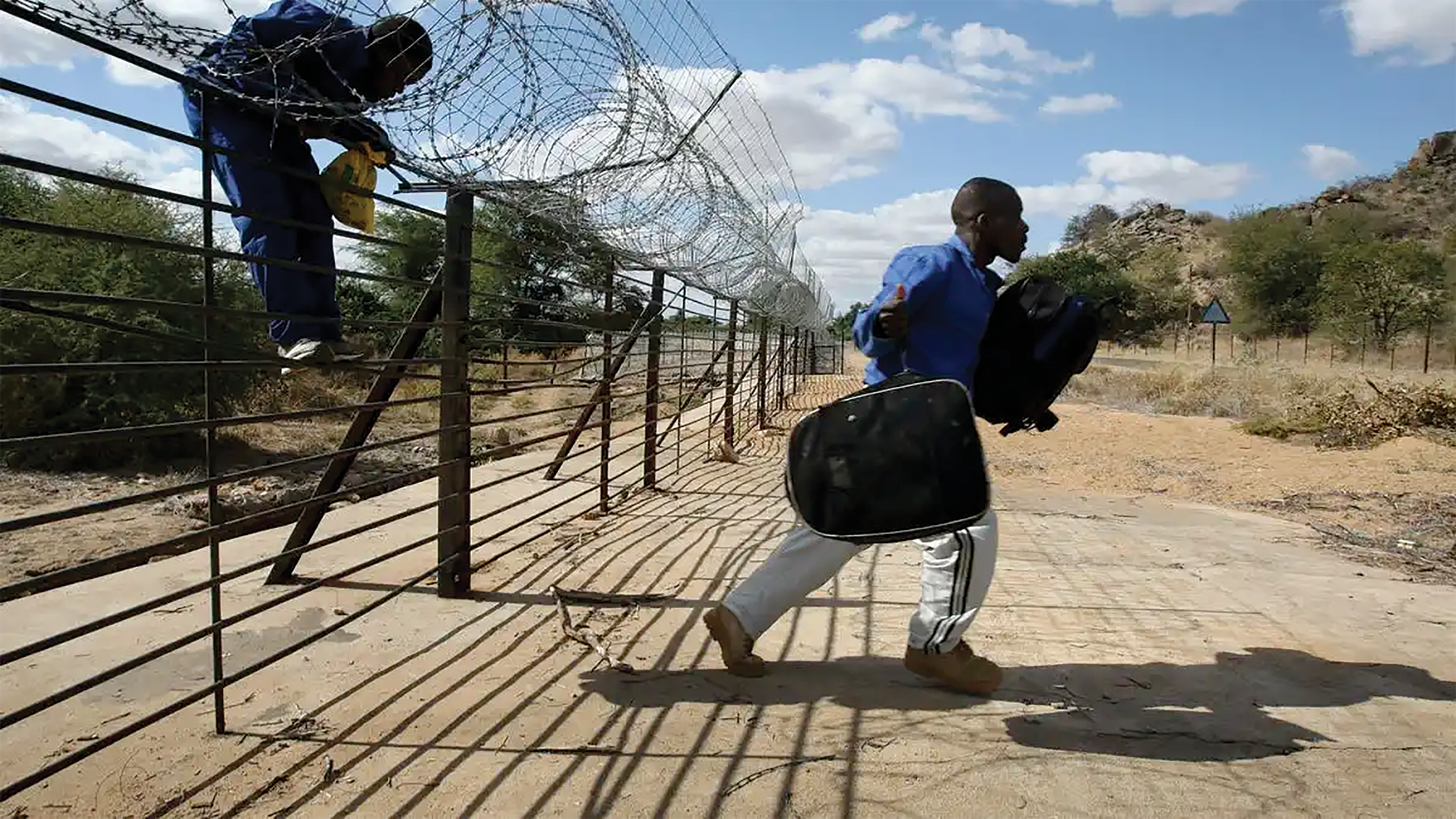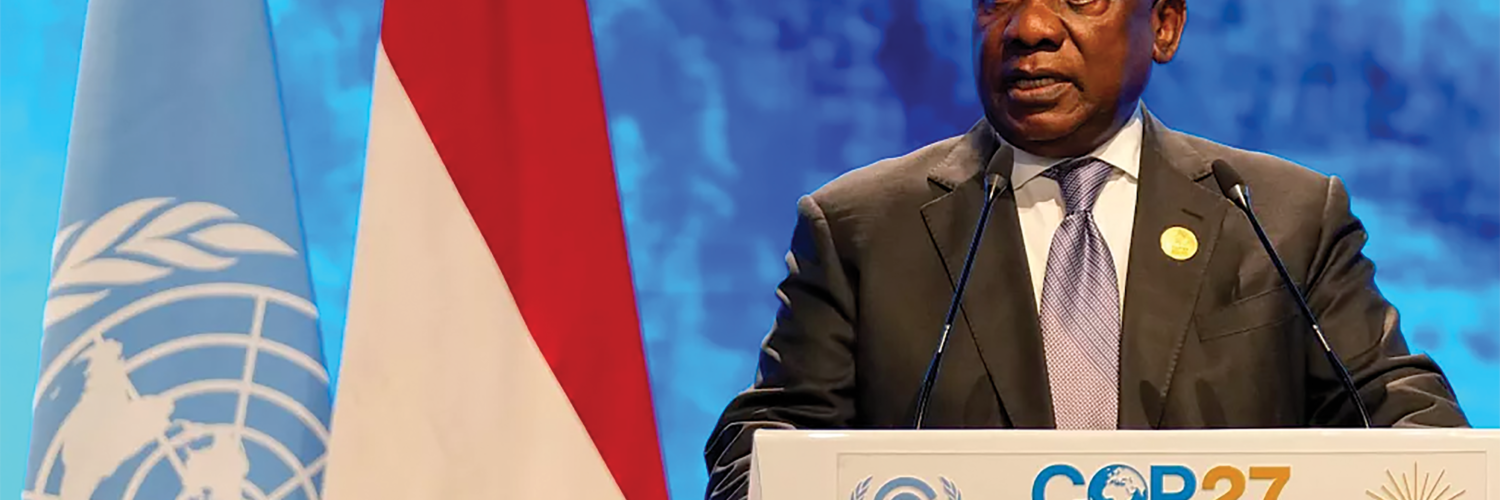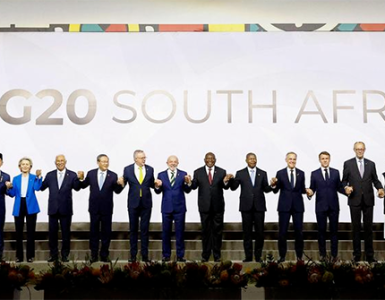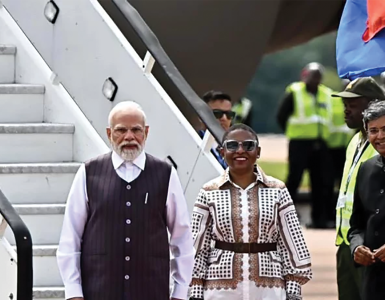SUSTAINABILITY: As the date for COP28 approaches, the urgency of global warming requires cooperation from all nations across the world…
By Keketso Motjuwadi
The clock is ticking. Humanity has less than five years to prevent irreversible global temperature increases beyond 1.5°C, a point of no return, as illustrated by the Climate Clock in New York’s Union Square.
In 2023, alarm bells are ringing louder as we grapple with record-breaking temperatures and unprecedented flooding in many parts of the globe.
As we approach COP28 in Dubai this November, the urgency of climate action couldn’t be more evident. COP, established in 1994, aims to combat climate change by uniting countries and stakeholders worldwide.
The summit has been held every year for almost three decades, with the aim of tackling climate change and advancing towards halting an increase in global temperatures. In reality, the opposite has occurred. The month of July 2023, for instance, was the hottest month ever recorded in terms of global temperatures, according to NASA.
COP28 President-Designate Dr. Sultan Al Jaber has said: “To keep 1.5 within reach we must act with ‘ambition and urgency’ to reduce emissions by 43% by 2030.”
This is a tall task that requires cooperation from across the globe.
At COP27, South Africa played its part by introducing the Just Energy Transition Investment Plan (JET IP), a groundbreaking initiative in partnership with the US, UK, Germany, France, and the EU. JET IP will allocate around R173 billion over the next 3-5 years to propel South Africa towards a low-carbon, climate-resilient society, serving as a model for other nations.
This comes as South Africa continues to face crippling power cuts, owing to loadshedding, and an intensified debate around prolonging the life of existing but aging coal stations.
Another pivotal outcome of COP27 was the establishment of a loss and damage fund, assisting vulnerable nations affected by climate-induced natural disasters.
Funding could support early warning systems, disaster preparedness, and infrastructure improvements. But details on which nations will contribute and how much remain unclear. Representatives from 24 countries will collaborate to determine contributors and distribution methods.
COP28 does bring some promise, though, notably through the inaugural Global Stocktake (GST) which will be evaluating the Paris Agreement progress. Additionally, Vanuatu, a Pacific Island nation, is seeking an international court’s legal opinion on states’ climate obligations, potentially setting a precedent for climate justice and the loss and damage fund’s implementation.
Vanuatu’s success may inspire African cities to advocate for climate-resilient water infrastructure, agriculture, and a just transition to renewable energy. Initiatives such as the African Cities Water Adaptation Fund, Resilient Agriculture Innovations for Nature, and the Just Energy Transition Investment Plan for South Africa could be influenced.
The European Union (EU) aims for a more sustainable future, with EU nations committing to a global fossil fuel phaseout at COP28. Driven by climate impacts, geopolitical risks, and market volatility, this move is a welcome departure from the previous COP’s failure to agree on a phaseout. The EU’s commitment is vital, especially since oil-rich Saudi Arabia is a neighbouring country to the UAE.
Renewable energy’s growth is encouraging, generating 12% of the world’s electricity in 2022, per Ember. The 2023 International Energy Agency’s report predicts that 90% of new electricity demand over the next three years will come from clean energy sources like wind, solar, and nuclear energy. This shift could make renewables the globe’s largest electricity source, providing 35% of the world’s electricity.
Taking all of the above into consideration, there are at least three areas where governments and stakeholders can look to make progress at this year’s COP28: these being infrastructure development, green technology innovation, and skills and training.
With regard to infrastructure development, we can expect discussions at COP28 to focus on improving infrastructure to reduce greenhouse gas emissions. This should provide more opportunities for addressing challenges around designing and building sustainable infrastructure, combined with better resource management of water and energy builds.
In terms of green technology innovation, increased funding and collaboration around green technologies is increasingly becoming a must in our world. And we need to do everything we can to ensure that this space thrives. Finally, as sustainability and climate-related projects become more prominent, engineering firms will also need to invest in training and upskilling their employees to work on these projects effectively.
COP28 has the potential to accelerate sustainable policies and actions. For African nations, meaningful change requires solidarity, collaboration, perseverance, advocacy, and strong partnerships across public and private sectors, united with nations sharing similar interests and concerns.
- Keketso Motjuwadi – a civil and resilience engineer — is the Sustainability Lead for Royal HaskoningDHV. Royal HaskoningDHV is an independent, international engineering and project management consultancy with 140 years of experience and 6 000 colleagues across the globe. In 2022, Royal HaskoningDHV celebrated 100 years in South Africa.
PLUG GAPS IN SA BORDER POLICING
PRESSING: Increasing capacity of Border Management Authority so it can be able to perform its critical duties efficiently is paramount…
By Dr Zizamele Cebekhulu-Makhaza

After years of disorganised management and under-investment in border control, South Africa’s borders have been transformed into corridors of crime, enabling syndicates and criminal networks to conduct illegal cross-border activities largely uninterrupted.
Border control is thus one of the most pressing issues in our country’s fight against crime, as failing borders in turn facilitate activities such as sex trafficking, poaching, gun crimes, theft, hijacking, fraud and financial crimes, and many more.
Today, the several rail crossings between South Africa and our neighbouring countries are not managed at all. The border between South Africa and Lesotho is highly porous, allowing people to easily cross the border to steal cattle. Illegal immigrants are – likewise – easily able to enter the country through our transfrontier parks, such as the Kruger Park.
Next, our systems do not closely monitor and track the entry or exit of goods into the country – especially those moving through the infamous City Deep dry port in Johannesburg, which serves as an important transport hub for the entire Southern African Development Community (SADC) region.
When a container arrives from Europe via Durban that is destined for Botswana, for instance, it will not be checked at Durban before it is dispatched to City Deep. But once it has left City Deep, there is currently no way of monitoring whether it has indeed left the country with all goods intact as intended. And there is also no way of checking whether the container has been interfered with on the road between Durban and City Deep, or City Deep and Botswana.
Additionally, our systems are not integrated, which means that if a vehicle is reported as stolen in Johannesburg, it could take up to 48 hours to reflect on the border management system – by which time the vehicle has long disappeared.
To address these issues, far greater attention must urgently be given to capacitating the Border Management Authority (BMA), and to modernising our borders with the many technological tools currently available.
Notably, South Africa is home to 53 land border posts, as well as 10 airports and nine seaports. Prior to the establishment of the BMA, ports of entry were overseen by several departments or government entities including the South African Revenue Service (SARS); South African Police Service (SAPS); South African National Defence Force (SANDF); the State Security Agency (SSA); the Department of Home Affairs; the Department of Health; the Department of Agriculture, Forestry and Fisheries; the Department of Transport; the Department of Trade and Industry (DTI); the Department of Public Works; and the Department of Environmental Affairs.
With so many entities involved, it is little wonder that fragmentation has been a persistent issue for so long. First, each entity had its own priorities and procedures, leading to the duplication of certain tasks and unnecessary delays.
Second, this siloed multi-agency approach meant that while other important areas may have been overlooked – especially as border management was not the central mandate of any of the organisations involved.
As a representative from the BMA explained, if a hole developed in the fence near the Beitbridge border post, the question would arise: who would be responsible for fixing it? Each department had its own budget priorities, and so the hole may have been left unrepaired for many months.
In response, far from an unnecessary “bureaucratic layer” as critics have called it, the formal establishment of the BMA in April this year was vital, offering a single point of command and control for the country’s borders. This agency is an executing entity, mandated to carry out the policies proposed by various government departments, while providing an integrated management approach to ensure that all resources are utilised effectively.
However, the BMA still requires far greater human and financial resources to successfully assume responsibility for the country’s border enforcement activities. Other departments and entities must be encouraged to relinquish their positions at the country’s borders, transferring the necessary officials and budget to the BMA for it to perform its role effectively. Likewise, the National Treasury must support the BMA’s request for funding to aid its recruitment efforts, and its efforts to plug the gaps in our border control.
If the BMA’s border guards continue to co-exist with police service members, customs officials and the SANDF at our borders, inefficiencies and fragmentation will simply continue.
Furthermore, the BMA must be equipped with latest technologies, beginning with fully integrated border management systems, but also with drones, motion detectors, infrared cameras and gamma ray technology that could improve border monitoring and the mobilisation of resources where necessary. Moreover, surveillance systems at all ports should be mandatory to prevent corruption.
Ultimately, stemming the flow of crime at our country’s borders could play a significant role in preventing and reducing South Africa’s high crime levels. The government must fully embrace advancements in both its strategy and technology to secure our borders, creating safer communities for all.
- Cebekhulu-Makhaza is the president of the Police and Prisons Civil Rights Union (POPCRU)






























